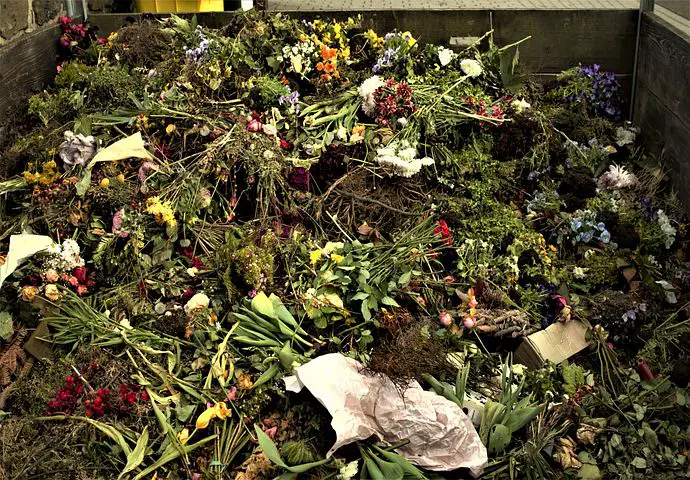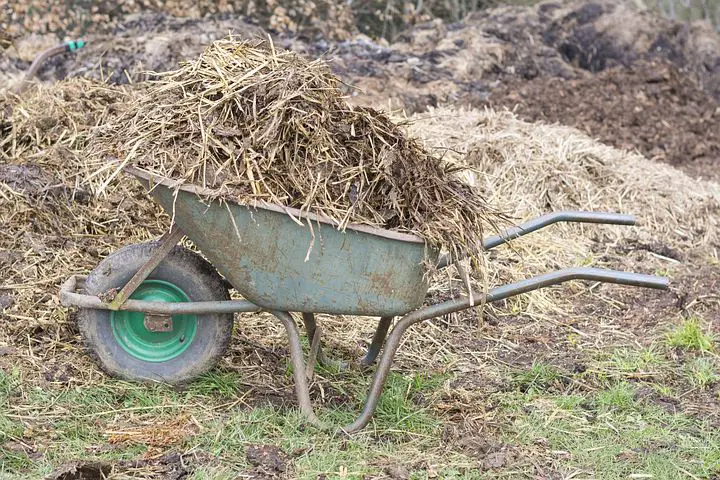Green wastes refers to organic waste that is generated from plants and other organic materials, such as leaves, grass, branches, and garden waste. This type of waste is typically generated from residential and commercial properties, including yards, gardens, parks, and other green spaces.
Green waste can be recycled and reused in a variety of ways, such as composting, mulching, or turning it into energy through anaerobic digestion. Composting is the most common way to recycle green waste. It involves breaking down the organic matter in a controlled environment, such as a compost bin or pile, into a nutrient-rich material that can be used to fertilize soil and improve plant growth.
Mulching, on the other hand, involves using shredded green waste as a protective layer over soil. This helps to retain moisture, suppress weeds, and prevent soil erosion. Green waste can also be turned into energy through anaerobic digestion, a process that involves breaking down organic matter in the absence of oxygen to produce biogas, which can be used as a renewable source of energy.
The Products Derived From Green Wastes

Green waste refers to organic waste that is generated from landscaping and yard maintenance activities such as pruning, mowing, and leaf litter. This waste can be transformed into useful products through various processes. Some of the products that can be derived from green waste include:
(1) Compost
Green waste can be used to create compost, which is a nutrient-rich soil amendment. Composting involves breaking down organic waste through a natural process of decomposition. The resulting compost can be used to improve soil fertility and plant growth.
Compost from green waste is a nutrient-rich soil amendment that is made by decomposing organic materials such as yard trimmings, leaves, and other plant debris. Green waste composting is an environmentally friendly way to dispose of yard and garden waste and can help reduce greenhouse gas emissions by diverting organic waste from landfills.
The process of making compost from green waste typically involves combining the organic materials with water and oxygen in a compost pile or bin. Over time, naturally occurring bacteria and fungi break down the organic matter, producing a dark, crumbly substance that is rich in nutrients and beneficial microorganisms.
The resulting compost can be used to improve soil health and fertility, promote plant growth, and reduce the need for chemical fertilizers and pesticides. It can also help retain moisture in the soil and prevent erosion.
To make high-quality compost from green waste, it is important to use the right balance of materials and maintain proper moisture and aeration levels in the compost pile. Turning the compost regularly and monitoring the temperature and moisture content can also help ensure that the composting process is efficient and effective.
Read Also: The Products Derived From Domestic Waste
(2) Mulch
Mulch is a layer of organic material that is applied to the soil surface around plants to conserve moisture, suppress weeds, and regulate soil temperature. Green waste can be chipped or shredded to create mulch.
Mulch made from green waste is a popular option for gardeners and landscapers who want to improve soil health and promote healthy plant growth. Green waste is plant material that has been generated from residential or commercial landscapes, such as leaves, grass clippings, and pruned branches.
When this plant material is shredded and left to decompose, it can create a nutrient-rich organic mulch that can be used to improve soil quality and prevent weed growth. Some of the benefits of using green waste mulch include:
Improved soil quality: Green waste mulch helps to improve soil structure, increase soil moisture retention, and provide nutrients to plants.
Weed suppression: A layer of green waste mulch can help to suppress weed growth by blocking out sunlight and reducing soil moisture.
Pest control: Green waste mulch can attract beneficial insects and microorganisms that help to control pests and diseases in the soil.
Sustainable solution: Using green waste as a source of mulch is a sustainable way to recycle organic material and reduce landfill waste.
When using green waste mulch, it’s important to ensure that the material has been properly processed to remove any weed seeds or pathogens that could harm plants. It’s also important to avoid using green waste from sources that have been treated with pesticides or other chemicals. By taking these precautions, green waste mulch can be a valuable resource for promoting healthy plant growth and improving soil health.
(3) Biomass fuel
Green waste can be converted into biomass fuel, which can be used to generate heat or electricity. This process is known as biomass energy or bioenergy.
Biomass fuel from green waste involves converting organic matter such as yard trimmings, agricultural waste, and forestry residues into a usable energy source. This process can be done through several methods, including combustion, gasification, and anaerobic digestion.
Green waste can be collected from various sources such as parks, gardens, residential and commercial areas, and industrial facilities. Once collected, it is processed and converted into usable fuel. Biomass fuels produced from green waste can be used for heating, electricity generation, and transportation fuels.
The use of biomass fuels from green waste has several advantages. First, it helps to reduce the amount of waste that would otherwise end up in landfills. Additionally, it is a renewable energy source that reduces reliance on non-renewable resources such as fossil fuels. Furthermore, it has a lower carbon footprint than traditional fossil fuels, making it a more sustainable energy option.
However, there are also some challenges associated with biomass fuel from green waste. One challenge is that it requires significant infrastructure and investment to process and convert the organic matter into a usable fuel. Additionally, there may be environmental concerns associated with the production and use of biomass fuels, such as air pollution and deforestation. Therefore, careful management and regulation of biomass fuel production and use is essential to ensure its sustainability and minimize its impact on the environment.
(4) Biochar
Biochar is a type of charcoal that is created through the process of pyrolysis, which involves heating organic material in the absence of oxygen. Green waste can be used to create biochar, which is a stable form of carbon that can be added to soil to improve soil health and fertility.
Biochar is a type of charcoal that is produced by heating organic material, such as green waste, in the absence of oxygen. Green waste refers to organic waste that is generated from plants, such as leaves, grass clippings, and prunings.
Producing biochar from green waste has several benefits. First, it can be used as a soil amendment to improve soil fertility, water retention, and microbial activity. Biochar also has the ability to sequester carbon in the soil for centuries, which can help mitigate climate change. Additionally, producing biochar from green waste can divert organic waste from landfills, reducing methane emissions and promoting a circular economy.
The process of producing biochar from green waste typically involves shredding the waste material, then heating it in a pyrolysis reactor at temperatures between 300-700°C in the absence of oxygen. The resulting biochar can be used directly as a soil amendment, or further processed into other value-added products such as activated carbon.
However, it is important to note that producing biochar from green waste should not be viewed as a solution to waste reduction or environmental problems on its own. It is important to also prioritize reducing waste generation and increasing recycling and composting efforts to minimize overall environmental impact.
Read Also: The Products Derived From Grey Water
(5) Animal feed

Some types of green waste, such as grass clippings and leaves, can be used as animal feed. This can be a cost-effective way to supplement animal diets with nutritious forage. Animal feed can be produced from green waste through a process called ensiling. Ensiling is the preservation of forage crops, such as green waste, in airtight conditions. This process allows for the fermentation of the crop, which results in the production of lactic acid, reducing the pH and preserving the feed.
Green waste can be collected from various sources, including parks, gardens, and farms. Once collected, it is chopped into small pieces and placed in an airtight container, such as a silo or a plastic bag. The container is then sealed to prevent air from entering and to create anaerobic conditions necessary for fermentation.
During the ensiling process, the green waste is subjected to natural fermentation by lactic acid bacteria, which breaks down the plant material into organic acids and sugars. This process reduces the pH of the feed, which prevents the growth of harmful bacteria and preserves the nutritional quality of the feed.
The resulting feed, known as silage, is rich in carbohydrates, proteins, and minerals and can be used as a feed for livestock such as cattle, sheep, and goats. Silage can provide an excellent source of nutrition for animals, especially during times of drought or when pasture is scarce.
Producing animal feed from green waste through ensiling can be an effective way to recycle organic waste and reduce the environmental impact of livestock farming.
(6) Paper products
Green waste can also be used to produce paper products such as newsprint, cardboard, and tissue paper. This process involves breaking down the cellulose fibers in the plant material and reconstituting them into new paper products.
Green waste, also known as yard waste, is organic material generated from activities such as lawn and garden maintenance. This waste can be converted into paper products through a process called pulping, which involves breaking down the organic material into a pulp that can be used to create various paper products.
Here are some of the paper products that can be made from green waste:
Compostable paper plates and bowls: These products are made from a mixture of green waste and other fibers, such as bamboo or sugarcane, and are fully compostable.
Paper towels and tissue paper: These products can be made from recycled paper pulp, which can include green waste, and are commonly used in households, restaurants, and other commercial settings.
Biodegradable paper bags: These bags are made from a mix of green waste and other fibers, such as cotton, and can be used for packaging various goods.
Cardboard: Corrugated cardboard boxes and other paper packaging products can be made from recycled green waste pulp.
Stationery products: Notebooks, journals, and other paper-based stationery products can be made from recycled green waste pulp.
It is important to note that the process of converting green waste into paper products requires significant resources, such as water and energy, and can result in the emission of greenhouse gases. Therefore, it is crucial to consider the environmental impact of these products and look for sustainable alternatives whenever possible.

